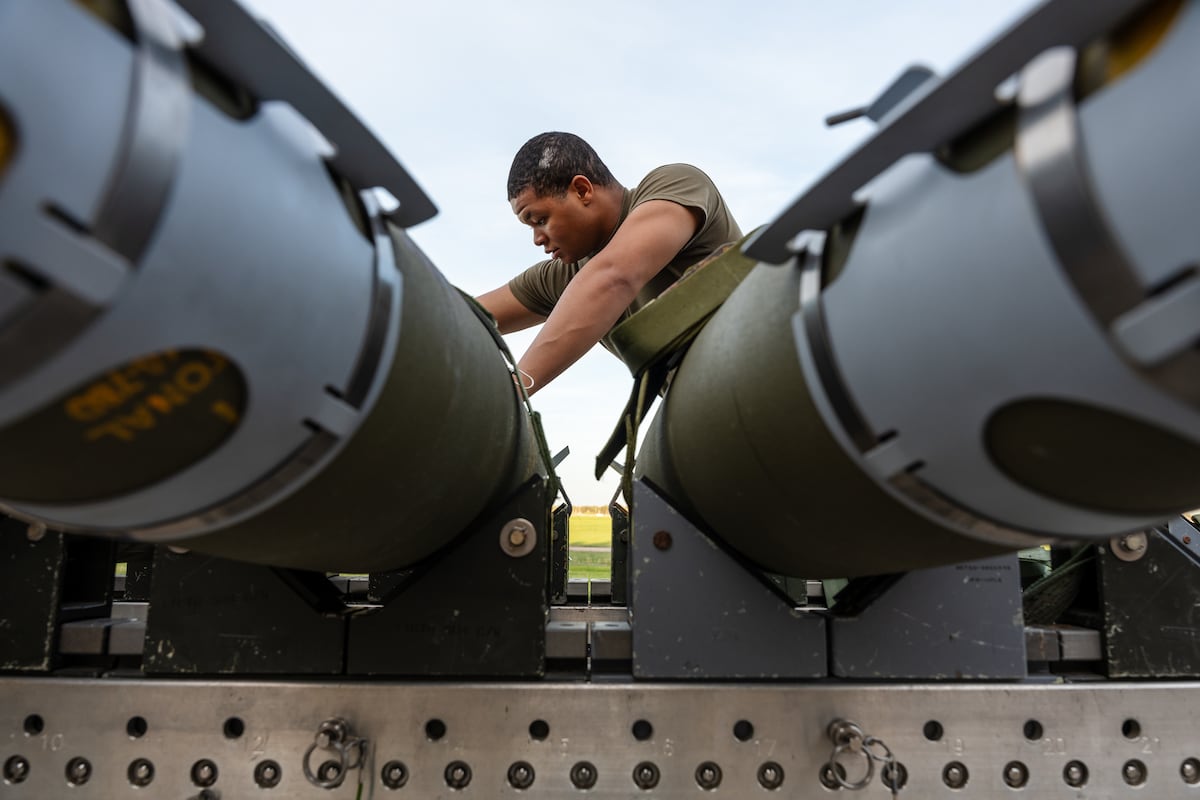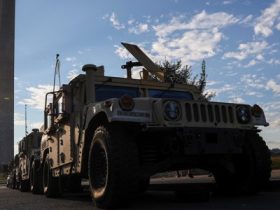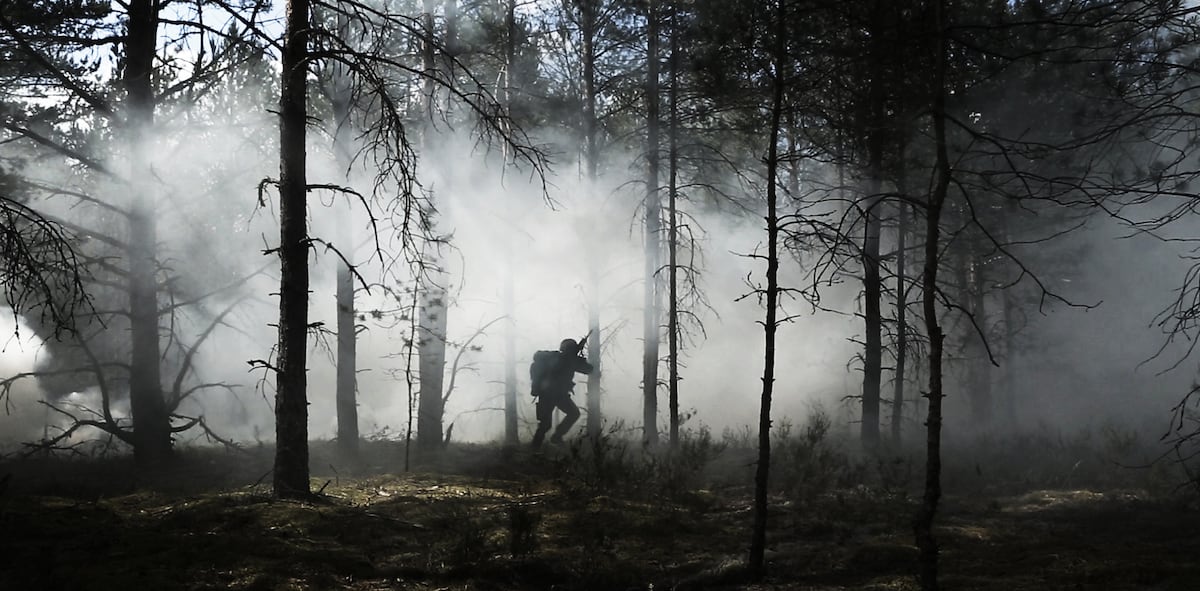NASHVILLE, Tenn. − For the first time, the Army’s UH-60M Black Hawk utility helicopter lifted off the ground into a hover at a Sikorsky test facility, powered by the improved turbine engine that has been in development since the mid-2000s, according to the service’s program executive officer for aviation.
But as the Improved Turbine Engine Program leaps that hurdle toward the finish line, the effort is in jeopardy as the service looks to cut large programs to make way for the pursuit of what it sees as higher priorities amid the need to cut its budget by 8% as directed by the defense secretary.
Army Vice Chief of Staff, Gen. James Mingus told reporters at the Army Aviation Association of America confab here that the service is waiting to see where it lands with the fiscal 2026 budget. Officials are trying to gauge how much flexibility the service has in the budget reconciliation process to fully understand if it can afford to pay for ITEP.
“The future of ITEP is largely going to depend on where all these things land inside the ’26 budget,” Mingus said.
Currently, there is no funding planned to move the program from development into production.
Amid mixed messages on the engine’s fate over the past several weeks, following the release of an Army directive outlining sweeping change to the service dubbed by the service secretary as the Army Transformation Initiative, Army aviation leaders are working on various potential paths for the engine.
Options include outright cancellation, a continuation of the development program followed by its closeout, or a decision to proceed into production.
“We have two weeks, and now there are several programs named, you know, each of them come with a set of courses of action that we have been working on to make sure that we can meet Army senior leaders’ intent,” Brig. Gen. David Phillips, the Army’s program executive officer for aviation, told reporters May 15 at the Army Aviation Association of America.
The ITEP program kicked off in a competition 15 years ago to replace the engines in both the UH-60 and the AH-64 Apache attack helicopter. But the engine effort has been plagued by various delays across its life as the service wrestled with funding, development strategies and a protest from the Advanced Turbine Engine Company – a Honeywell and Pratt & Whitney team, which competed against General Electric’s aerospace division to build the engine for the Army.
More recently, the engine was hit with more delays due to technical issues as well as the coronavirus pandemic, which caused supply chain problems.
When GE won the contract, it touted a plan to move more quickly, but that window to accelerate closed and the Army subsequently predicted a two-year delay getting the T901 engine into the UH-60 Black Hawk, the first aircraft in the current fleet to receive the new tech.
The Army was able to garner some important data when it chose to integrate the ITEP onto two competitive prototypes for the Future Attack Reconnaissance Aircraft. The companies in that competition – Bell and Sikorsky – had both received the engines and were installing them when the service decided to cancel the FARA program early last year.
When the service canceled the FARA pursuit, it also delayed a production decision for the ITEP engine by three years.
Sikorsky had taken advantage of fiscal 2024 FARA program funding before the Army officially closed the program at the end of the year to run tests of the ITEP in the prototype, ahead of integrating the engine into the UH-60, in order to drive down risk.
The company received the first ITEP engines for the Black Hawk last fall and began ground runs earlier this year.
“We’re currently still under contract to execute the program we were for ITEP,” Rich Benton, Sikorsky’s head, told Defense News in an interview at the AAAA event. “There’s still budget in 2025 to continue that work. Will there be budget in the future years or not? You know, that’s up to the Army and the [congressional] appropriators,” he said.
“The budget we have today, we’ll get the Black Hawk in the air,” he said in a May 14 interview. “How much flying and how much data we get from that will be up to the Army,” Benton said.
“We’re looking at a path ahead in real time on the options and the options could be finish [integration], because there’s not just the aircraft integration going on, but there’s also the engine qualification testing that is going on in test stands,” Phillips said. “We’ve had engines in test stands now for several years gathering low altitude, high altitude, low performance, high performance data. All of that data is very rich and informing the path ahead.”
Additionally, the Army continues to have discussions with its joint partners regarding their interest in the engine and how they might integrate it onto their aircraft and a potential path forward there, according to Phillips. And foreign partners have also asked the same question about how they could potentially move forward with the ITEP engine as well.
“We’re presenting all those, on how we could get Army senior leaders to meet their intent but get the most out of the dollars that we’ve invested in the program,” he said.
Overall, the Army has spent over an estimated $1.5 billion over the past two decades on ITEP and its precursor development. The service had spent approximately $720 million on the program by 2016. The Army’s contracts to competitors in 2016 totaled $256 million and the service awarded a $517 million contract for the engineering and manufacturing development phase to GE in 2019.
What is under consideration for a different path to modernize the Black Hawk and Apache’s engines, if the Army chooses to end the ITEP program prior to production, is unclear.
“If I had to decide today, hey, if that engine isn’t going to be available in the future, what would I do differently? Integrate a different engine? I would quickly pivot to the engine the [Special Operations forces] flies. The SOF flies with a more powerful engine,” Benton said. “Today it’s been integrated in Black Hawk, it has been demonstrated. It is available today, so there would be commonality that would provide some more capability than I have today, [but] not as much as ITEP.”
The Army is “always looking at new ways to provide more performance to the aircraft, whether it’s making components lighter, whether it’s adding more power, whether it’s adding additional fuel consumption capabilities,” Phillips said, “We always look at that and I think we’ll continue to look at that regardless of the outcome.”
Jen Judson is an award-winning journalist covering land warfare for Defense News. She has also worked for Politico and Inside Defense. She holds a Master of Science degree in journalism from Boston University and a Bachelor of Arts degree from Kenyon College.
Read the full article here








Leave a Reply